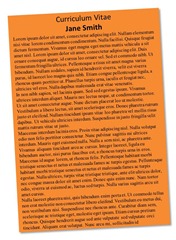One of the most daunting tasks for a new manager is conducting their first job interviews. The stakes are high: get it wrong, and you may be stuck with a capable – but not that capable – colleague for years. Get it right, on the other hand, and you have not just added a huge asset to your organisation, but you will probably make your own life easier.
So what can you do to improve your chances of securing the right candidate?
In a series of three articles, Management Pocketblog will offer you:
- Preparing the Ground
Increase your chances of success well before the interview
- Getting it Right
Hints and advice for conducting and effective interviews
- Polishing your Process
Tips and tricks of the trade
Preparing the Ground
Your interview can only be successful if you get the right candidates in front of you, so your process needs to start right back at the beginning – thinking clearly about the role you need to fill. Avoid the lazy option of re-issuing an existing job description and start afresh.
The Job Requirements
Look at your requirements in terms of the job, your organisation’s short and medium term plans, the team of people that is there, and what you believe it will take to do the work to the highest standards. This is time consuming and will doubtless require consultation and negotiation. But if you get it wrong, two risks emerge; either:
- You get someone who fits the job description (JD) perfectly, but it is the wrong JD, so you have the wrong person.
- You get the right person despite the poor JD, and then other candidates can legitimately claim that the interview process was unfair, in not selecting against the published JD.
Handling the Advertising and Admin
How you advertise the vacancy and handle enquiries will tell candidates a lot about your organisation. The impression that they form may be fair or false, but it will influence everything from how candidates present themselves to you at interview to whether they accept a job you offer. So, if you get that wrong, a good candidate may mis-judge you and perform poorly or may succeed at interview, only to turn you down.
How many times have you phoned a business up and had to wait for a grumpy person to take your call and then lose you in the system? Would you want to work for that company? No? Neither will the best candidates.
Do your Reading
When applications and CVs come in, take the sifting process seriously. Evidence-based sorting and shortlisting is not just fairer than impression-based selection: it gives better results. So before any responses come back, devise a set of criteria to rate or rank all applications. Do so on the basis of the factors that matter most to this role, and choose a small number of factors. Keep the process simple and then evaluate each application scrupulously against these criteria.
Ideally, have two people do it independently and average the scores. Before doing that, examine any applications where the two give substantially different scores. Work together to examine the evidence in the application and decide which of you mis-read the application.
Prepare for the Interview 1
Create an interview process that focuses on the most relevant skills, experience and characteristics for the job. Avoid clever tricks (more in the next blog) and questions designed to catch the candidate out. Instead, presume that each candidate is ideal for the job and design a process that allows each to show how she or he fits perfectly and what extra qualities they bring. Some will fail to give you the evidence that convinces you, and you will exclude them. This approach is better than risking catching out a perfect candidate with a clever trick, while the so-so candidate sails through by playing it safe.
Prepare for the Interview 2
In the perfect world, all applications would be rendered into uniform, relevant data only briefs before interviewers read them ahead of the interview. This means that, in preparing,you only see the relevant information and are not distracted by irrelevancies (for example, gender, age, and sometimes layout and handwriting).
Whether you have the resources to do this or not, read the information that you have carefully and highlight the most salient details, which you wish to explore in the interview. Highlight those sections and note your questions. Avoid putting smart remarks like ‘obviously a lie’ on them, as these papers may be disclosable under the Data Protection Act and so open you up to tribunal or worse.
If you do suspect a problem, use phrases like ‘explore in detail’ instead. You need to know each application and CV thoroughly before the candidate walks through the door.
Next Time…
… we’ll be looking at the interview itself.
Management Pocketbooks you may enjoy

The Interviewer’s Pocketbook
The Managing Recruitment Pocketbook
Or, if you are expecting to be on the other side of the table…
The Succeeding at Interviews Pocketbook




